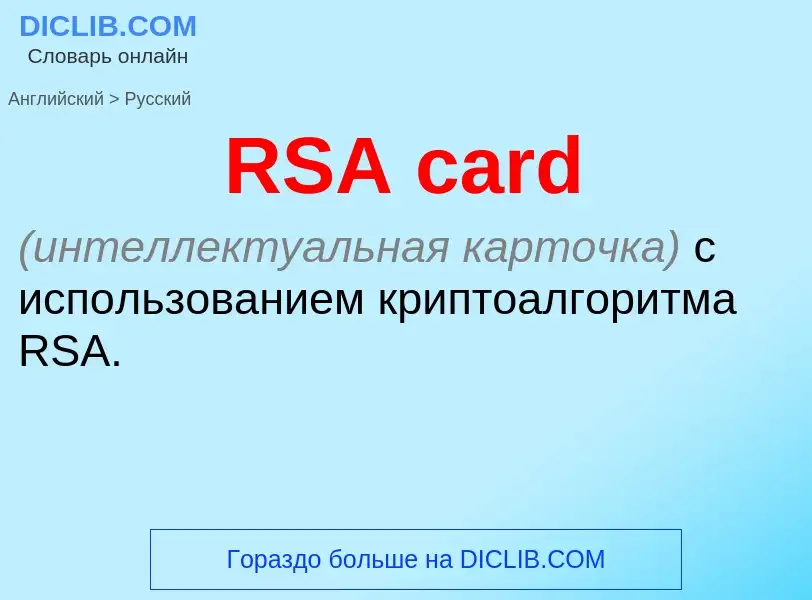Tradução e análise de palavras por inteligência artificial ChatGPT
Nesta página você pode obter uma análise detalhada de uma palavra ou frase, produzida usando a melhor tecnologia de inteligência artificial até o momento:
- como a palavra é usada
- frequência de uso
- é usado com mais frequência na fala oral ou escrita
- opções de tradução de palavras
- exemplos de uso (várias frases com tradução)
- etimologia
RSA card - tradução para Inglês
Definição
Wikipédia
In mathematics, the RSA numbers are a set of large semiprimes (numbers with exactly two prime factors) that were part of the RSA Factoring Challenge. The challenge was to find the prime factors of each number. It was created by RSA Laboratories in March 1991 to encourage research into computational number theory and the practical difficulty of factoring large integers. The challenge was ended in 2007.
RSA Laboratories (which is an acronym of the creators of the technique; Rivest, Shamir and Adleman) published a number of semiprimes with 100 to 617 decimal digits. Cash prizes of varying size, up to US$200,000 (and prizes up to $20,000 awarded), were offered for factorization of some of them. The smallest RSA number was factored in a few days. Most of the numbers have still not been factored and many of them are expected to remain unfactored for many years to come. As of February 2020, the smallest 23 of the 54 listed numbers have been factored.
While the RSA challenge officially ended in 2007, people are still attempting to find the factorizations. According to RSA Laboratories, "Now that the industry has a considerably more advanced understanding of the cryptanalytic strength of common symmetric-key and public-key algorithms, these challenges are no longer active." Some of the smaller prizes had been awarded at the time. The remaining prizes were retracted.
The first RSA numbers generated, from RSA-100 to RSA-500, were labeled according to their number of decimal digits. Later, beginning with RSA-576, binary digits are counted instead. An exception to this is RSA-617, which was created before the change in the numbering scheme. The numbers are listed in increasing order below.

![[[Adi Shamir]], co-inventor of RSA (the others are [[Ron Rivest]] and [[Leonard Adleman]]) [[Adi Shamir]], co-inventor of RSA (the others are [[Ron Rivest]] and [[Leonard Adleman]])](https://commons.wikimedia.org/wiki/Special:FilePath/Adi Shamir 2009 crop.jpg?width=200)
